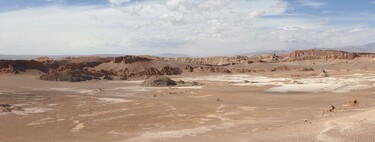When discussing domestication, most people think of animals like dogs, cats—a bit more difficult—, and farm animals. However, humans have also domesticated fruits and vegetables for thousands of years. One example is the avocado, a fruit that has become a global obsession. Without early human intervention 7,500 years ago, the avocado might not exist today.
And the avocado of that time looked nothing like the one we know now.
Megafauna. The avocado first appeared in what is now Mexico around 400,000 years ago. Like many fruits, it differed significantly from today’s avocado. It was rounder, with thinner skin and a smaller pit—resembling a small apple. Pleistocene megafauna, which roamed the area, ate the fruit whole, including the seed. Their feces helped spread the seeds, leading to at least three avocado species: Mexican, Guatemalan, and West Indian. However, the Pleistocene extinction wiped out these large animals.
The avocado meteorite. According to The New York Times, the avocado’s range shrank dramatically after the megafauna disappeared. No other animals were large enough to eat the fruit whole and spread its seeds. This happened around 13,000 years ago, but humans eventually intervened.
A study on avocado domestication, published by researchers at the University of California, explains that humans domesticated the fruit out of necessity. “These humans—who, without the megafauna, now needed new food sources—began cultivating the fruit, ‘saving avocados,’” Doug Kennett, one of the study’s authors, said.
 Researchers excavating at El Gigante, Honduras.
Researchers excavating at El Gigante, Honduras.
El Gigante. Humans saved the avocado from near extinction. Researchers focused on a site in western Honduras called El Gigante, an elevated cave inhabited 11,000 years ago. Over the past 20 years, scientists have studied piles of pumpkin seeds, corn kernels, agave leaves, and other plant debris found there. Among these remains were avocado seeds.
Playing with genetics. Like Gregor Mendel with peas, early villagers saved seeds and planted avocado trees. Over generations, they pruned branches to encourage growth and selected the largest, fleshiest fruits. By 7,500 years ago, humans had made the pits larger and the fruit more resilient. Around 3,000 years later, the pits reached the size of an apricot, and the skin thickened further, indicating deliberate manipulation.
“[It’s] an indicator that people had started saving seeds and planting their own trees,” Amber VanDerwarker, another study author, said.
Transportation. The weight of the seeds and the size of the fruit may have contributed to the avocado’s pear shape. However, the study suggests that humans favored thick skins for practical reasons: thicker skins made the fruit easier to transport without damaging the flesh inside.
 The increase in avocado pit size over time, which indicates the selection of larger fruit.
The increase in avocado pit size over time, which indicates the selection of larger fruit.
Evidence shows that people in Peru, Mexico, Colombia, and Panama consumed avocados thousands of years ago. Researchers also speculate that thick skin made it easier to scoop out the flesh with a spoon, similar to how we eat avocados today.
Molecular research indicates that the avocado fully transformed into its modern form around 2,200 years ago.
Essential. The avocado was a staple for Mesoamerican civilizations. The Maya and Aztecs cultivated it as a key food source and developed varieties suited to different climates and altitudes. Their cultural influence and trade networks helped spread the avocado.
Worldwide avocado fever and wars. Today, the world is experiencing an avocado craze. Thanks to its nutritional benefits and popularity in dishes like guacamole—especially during the Super Bowl—the avocado has become a global phenomenon. Its importance is so great that it has even sparked trade disputes between Mexico and the U.S.
Researchers at the University of California say that while their findings are significant, further studies will likely uncover more evidence about avocado domestication and other food plants humans have manipulated over time.
Images | 青 晨 (Unsplash) | Thomas Harper and Ken Hirth (University of California)



